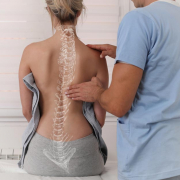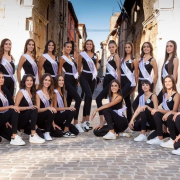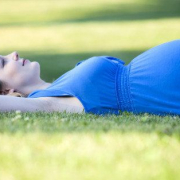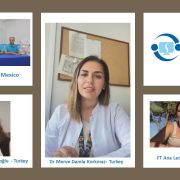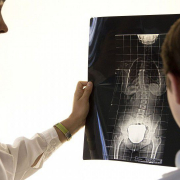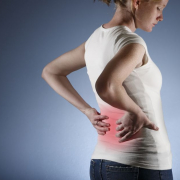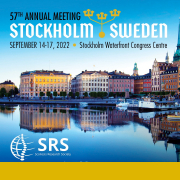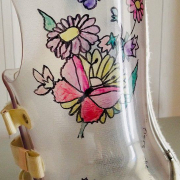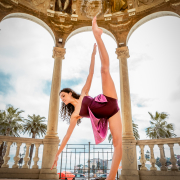Back pain is one of the most frequent musculoskeletal diseases: low back pain is estimated to affect about 80% of the population at least once in their lifetime, and 20% once a year; the rates are higher among working people.
Acute pain generally disappears spontaneously within a month; however, in a small percentage of people, this does not happen and the pain tends to become chronic, i.e., to last for more than 3 months, even following the resolution of the underlying condition.
Tissue injury can cause acute (“immediate”) pain. In this type of pain, termed nociceptive, pain signals are transmitted from the peripheral nervous system to the central nervous system areas responsible for pain processing.
This is what happens, for example, if we burn ourselves or sustain a traumatic tissue injury. In such cases, the pain usually disappears once the injury causing it heals.
Chronic pain, on the other hand, is a complex sensory and emotional experience.
We talk of chronic pain in situations where biological, psychological and social changes taking place after an injury or illness complicate the clinical picture so much that it becomes difficult to establish the initial cause of the pain and identify clearly the different mechanisms underlying it.
In such cases, pain thresholds are lowered and even non-painful stimuli are perceived as painful. At the same time, more and more brain areas begin receiving pain signals from the periphery. The whole body goes into a state of high alert, becoming rather like an oversensitive alarm system that “goes off” at the slightest thing, even when there is no real danger present.
Pain that has become chronic is also accompanied by symptoms of anxiety and depression: affected individuals struggle to tolerate their condition, often thinking about their pain all the time, and believing that nothing can be done to solve the problem. This “catastrophising”, rather like when you are unable to see anything positive in a situation, itself plays a part in making pain chronic, i.e., a habitual state, something that is there all the time.
So how can we help these patients? “The best way, also according to the evidence in the literature, is active physiotherapy, in other words, specific exercises” says ISICO physiatrist Dr Giulia Rebagliati. “The important thing is for the specialist to evaluate, together with the patient, the mechanisms and factors that favour the maintenance of the pain. The aim, through a cognitive behavioural approach, and by working together, is to replace recurrent thoughts and erroneous ideas with more functional pain and movement processing patterns.”
Absolutely, because, as remarked by our physiotherapist Martina Poggio, “without evaluating biopsychosocial factors that can contribute to the maintenance of pain, it is difficult for the therapist, together with the patient, to work out a long-term and truly effective treatment”.
An interesting article was recently published on this complex topic (Ashar YK, Gordon A, Schubiner H, et al. Effect of Pain Reprocessing Therapy vs Placebo and Usual Care for Patients With Chronic Back Pain: A Randomized Clinical Trial. JAMA Psychiatry. 2022). In it, the authors examined the efficacy of psychological pain reprocessing therapy (PRT) that sought to change patients’ beliefs about the causes and maintenance of pain.
The researchers studied 151 individuals aged 21 to 70 years who had suffered from back pain for at least half the days in the previous 6 months, and had an average pain intensity score of at least 4 out of 10 (where 0 is painless and 10 is the maximum bearable). The participants were then randomly divided into three groups.
The participants randomised to PRT each underwent a 1-hour telehealth evaluation and education session, in which they were introduced to the concept of “chronic pain as a brain-generated false alarm”.
These patients then had eight individual 1-hour sessions with a therapist who had extensive experience in PRT. During these sessions, “pain sensations while seated and while engaging in feared postures or movements” were reappraised, and techniques were used to increase positive emotions and address psychosocial threats that potentially amplify pain.
The subjects in the placebo group watched two videos describing how placebo treatments can relieve pain (e.g., how they can automatically trigger the body’s natural healing response). The subjects then received a subcutaneous injection of saline administered by a physician at the site of greatest back pain.
Finally, the third group continued to follow their usual care without any additions (they were simply given a chronic pain workbook after the end of their treatment).
What emerged? Chronic pain intensity was greatly reduced in the subjects in the PRT group compared with the two control groups, with 73% reporting no pain or nearly no pain post-treatment. The benefits of the treatment were still evident at 1-year follow-up.
How can we explain these differences and benefits?
“The treatment used in this study targeted pain, with the aim of helping patients reassess their ideas on its causes and significance” explains ISICO psychologist Dr Irene Ferrario. “It allowed the participants in the treatment group to reconceptualise their pain, enabling them to see it as a reversible phenomenon that can be controlled centrally, and not a genuine threat caused by peripheral tissue injury or disease. The PRT technique is based on existing psychological treatment models such as cognitive-behavioural interventions and interventions based on acceptance and mindfulness (self-awareness). It makes for better management or acceptance of pain: the specialist helps the patient to realise that painful activities are not necessarily harmful, and to better understand pain sensations and what causes them”.
In the physiotherapy rehabilitation setting, it is essential for the doctor and patient to evaluate together the mechanisms involved in pain, in order to manage the factors, such as erroneous beliefs, fear of movement or catastrophisation, that could lead it to become chronic. Sometimes, in more complex situations, it can be important to have the support of a psychologist, too, who will work in a team with the physician and physiotherapist in order to identify the causes of the pain and help the patient to overcome it.


